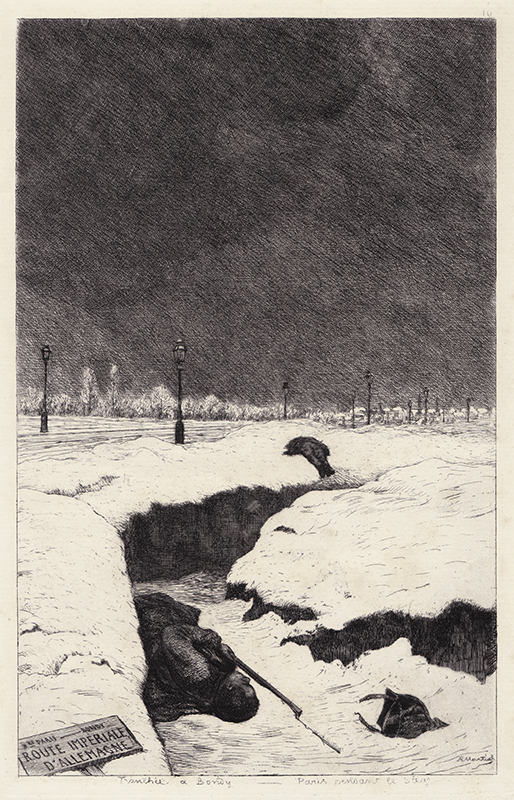
19th, 20th & 21st Century Fine Prints
707-546-7352 · fax 707-546-7924 · web: www.annexgalleries.com · email: artannex@aol.com
Tranchee a Bondy - Paris Pendant le Siege by Adolphe Martial-Potémont

Tranchee a Bondy - Paris Pendant le Siege
Adolphe Martial-Potémont
Tranchee a Bondy - Paris Pendant le Siege
Adolphe Martial-Potémont
1827 - 1883 (biography)Martial was a member of the Societe de Peintres-Graveurs, and would contribute to its annual publication with etchings that were often accompanied by observational notes. During the Franco-German War, he created a series of images under two categories, "Paris During the Seige" and "Paris Under Commune", with his usual notations. "Tranchee a Bondy" was created as the bitter winter of 1870 set in.
Martial's notes had dwindled down to brief recordings of hardship, and the impending surrender of Paris. London Quarterly Review 1873, vol. 41, pg. 501, notes: 'Throughout December the entries are brief, chiefly recording the severity of the weather and the growing scarcity of provisions. A full-page etching of a trench at Bondy is, perhaps, the most striking of the series.
It is late in the day, the sky dark and gloomy, the ground covered with snow, and in the angle of a zigzag trench that is open to view lies dead a German soldier still grasping his musket. His helmet lies at a little distance, and near him is a broken finger-post with the inscription, 'Paris - Bondy. "Route Imperiale a'Allemagne"'.
This image's composition, emblematic of solitude and the stillness of winter, is jarring in its almost casual portrayal of death in wartime. The corpse is nearly overlooked as it becomes a part of the stark landscape. However, that makes it all the more powerful as the viewer is asked to wonder which army the soldier belonged to, followed quickly by the more important question: does it matter, after all?
